
Drawing (on) a decade of climate change in the North
Artist Alison McCreesh’s latest book documents her travels around the Arctic during her 20s. In...
Everyone in southern Ontario knows the electricity transmission corridors that serve as a backdrop to urban life. In Toronto alone, 13 corridors stretch over 160 kilometres, lined with rows of soaring, high-voltage towers that carry power from nuclear plants and hydroelectric stations into businesses, factories, schools and homes.
While they’re essential to daily life, for a long time the city’s corridors were also underutilized. They are, after all, largely undeveloped swaths of government-owned land in a city where public space is at a premium. Locally, they’re known as “hydro fields,” which suggests their green space potential. But it wasn’t until 2002, when the provincial government took over ownership of the corridors from Hydro One, that imaginative “secondary uses” such as cycling paths, networks of trails and garden plots became possible.
In the Finch and Gatineau corridors running parallel to each other between Thorncliffe Park and Scarborough, two Indigenous farmers and their gitigaanan are bringing traditional agricultural practices back to Treaty 13 and Williams Treaties territory. Gitigaan means “little farm” in Ojibway and both Malvern Urban Farm in Scarborough and Flemo Farm in North York’s Flemingdon Park represent a chance for Toronto’s hydro fields to become sites of reconciliation.
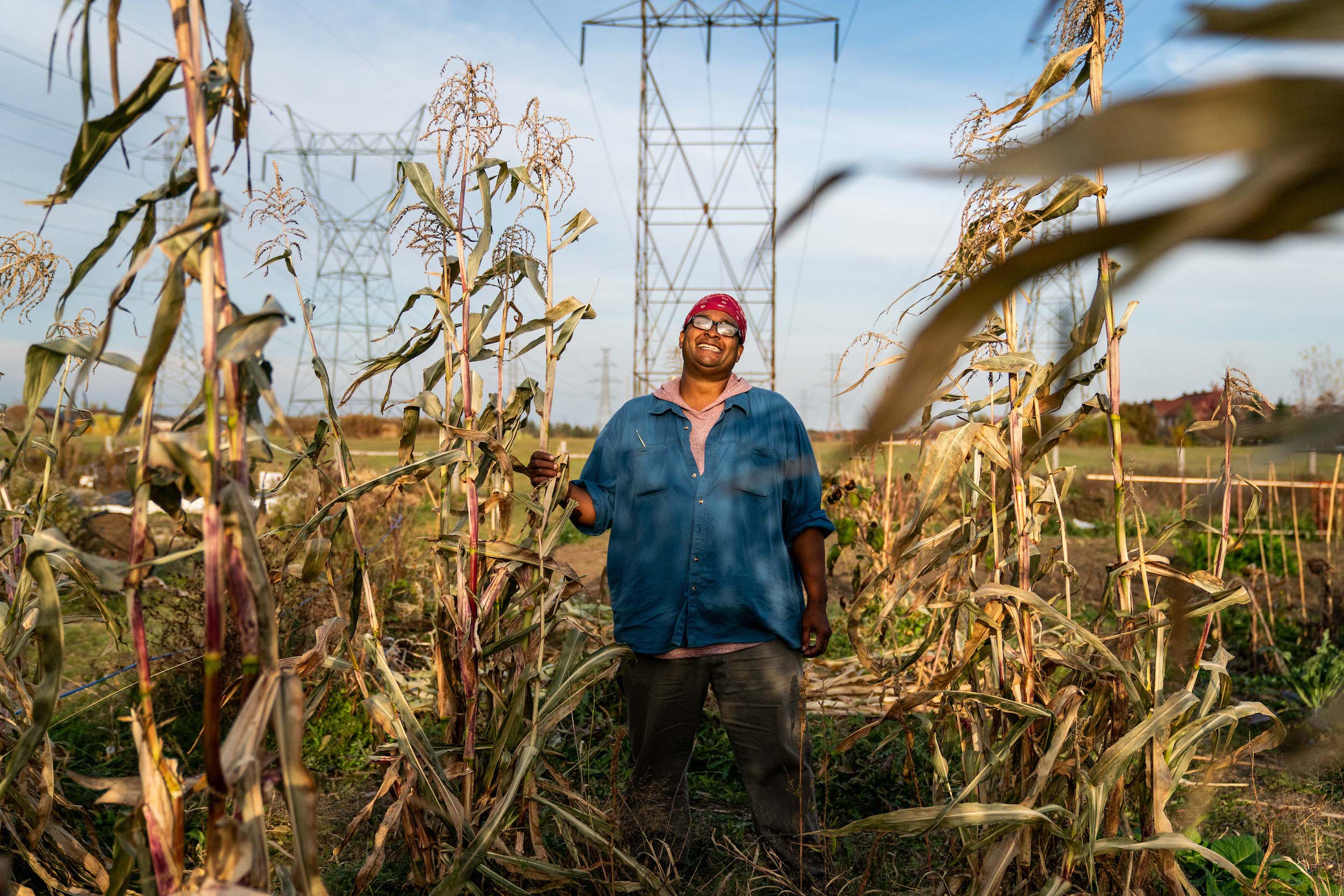
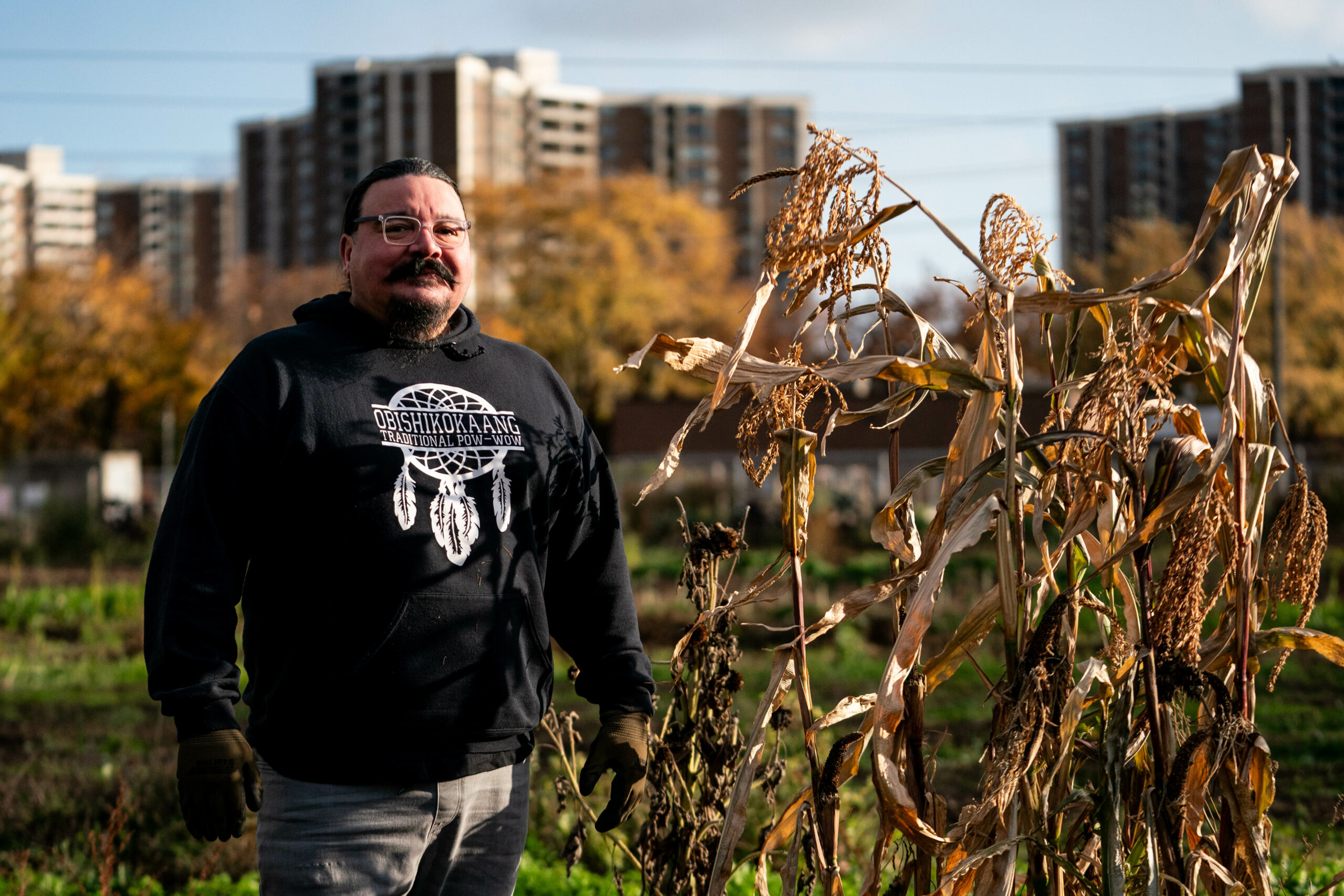
Led by Isaac Crosby and Charles Catchpole, these two small produce plots are part of a movement to decolonize food systems across Canada and the world. The focus isn’t just on food security, or reliable and affordable access to food, but food sovereignty: the right for people to create their own agricultural systems and to access healthy, culturally appropriate foods grown sustainably. It’s a term coined in 1996 by La Via Campesina, a global movement of farmers, Indigenous people, migrants and agricultural workers.
Indigenous food sovereignty is even more crucial: the B.C.-based Indigenous Food Systems Network defines it as a policy approach to addressing food security in Indigenous communities specifically. It means preserving and teaching Indigenous food-related knowledge, values and wisdom built up over thousands of years. The commercialization of the supply chain has cut many urban residents off from knowing how and where food is sourced before it ends up on our plates. The knowledge-sharing happening in both Malvern and Flemingdon Park is a chance to spread ancient, important information in communities that need it.
It’s also an opportunity to encourage local food production at a time when hunger has hit crisis levels: the Daily Bread Food Bank reports that one in 10 people living in the city now rely on food banks, with a 51 per cent increase in food bank visits in 2023 compared to the previous year. The 2021 census found 13.2 per cent of Toronto residents lived in low-income households, but for Flemingdon Park residents, that amount was one-fifth.
Both neighbourhoods are more ethnically diverse than other parts of Toronto: in 2021, Statistics Canada found almost half of all Torontonians are first-generation immigrants, compared to 62 per cent of people in Flemingdon Park and 60 per cent of residents of the neighbourhood the city calls Malvern East, where Crosby Gitigaan is located. And while almost 60 per cent of people in Toronto are “visible minorities” — the federal government’s term for non-white, non-Indigenous people — 89 per cent of Malvern East and 80 per cent of Flemingdon Park residents fit into that category. Less than one per cent of all Toronto residents are Indigenous, a tiny proportion consistent with the demographics in Flemington Park and Malvern.
In these two neighbourhoods, walking to a big box grocery store to buy imported goods is hard enough, let alone finding a local farmer providing fresh produce. Crosby and Catchpole describe the neighbourhoods they farm in as “food deserts,” where the communities lack access to affordable, culturally relevant groceries. Their gitigaanan could help people learn to grow their own healthy food and also, potentially, earn a livelihood.
The Narwhal caught up with Crosby and Catchpole in October to learn how both are using hydro corridors to reclaim land, share Anishinaabe agricultural knowledge with underserved urban communities and create needed change in how Torontonians access locally produced, farm fresh foods.
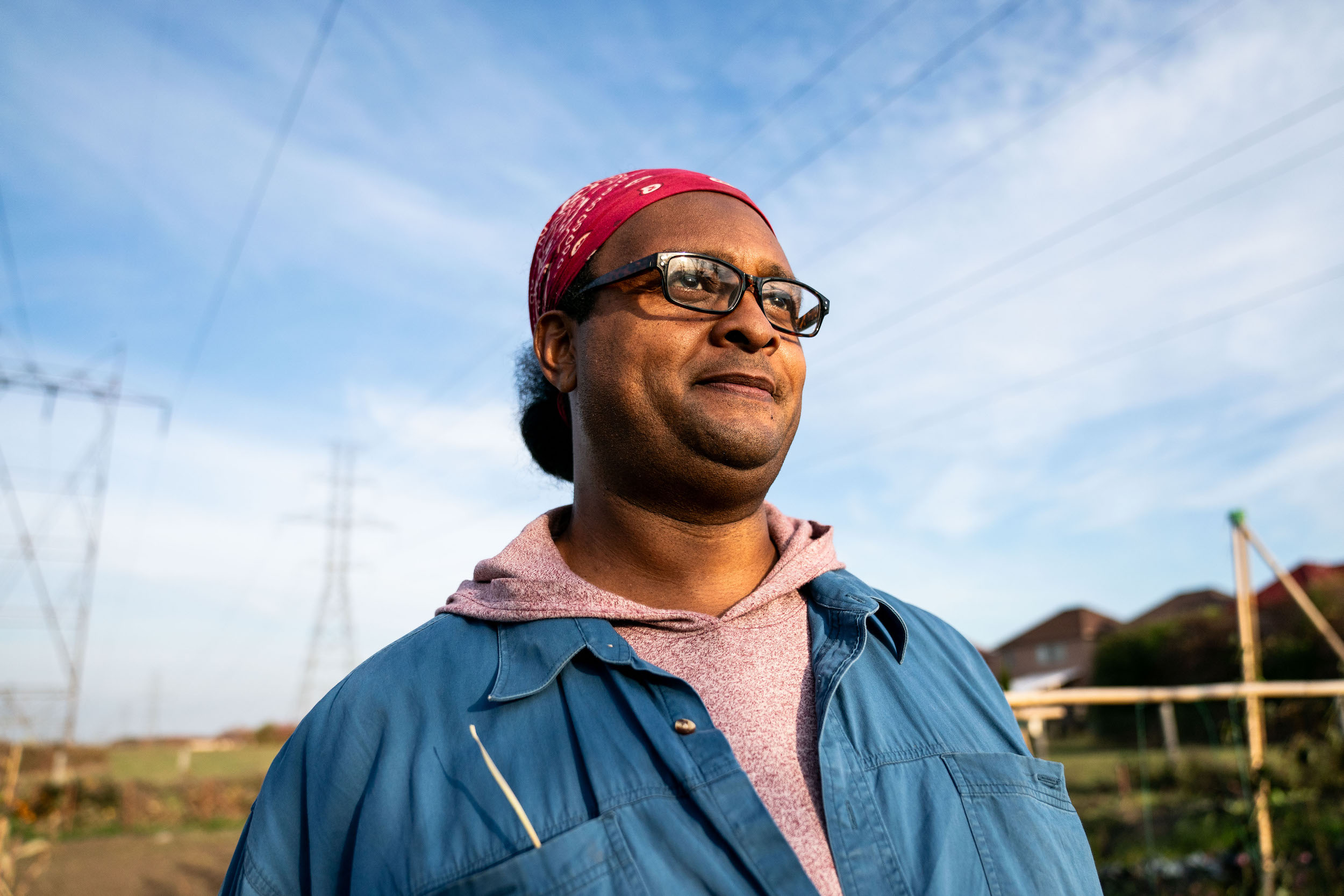
As the fall season winds down, farmers start to prep the two-acre (0.8-hectare) Malvern Urban Farm nested in between the Brookside and Morningside Heights neighbourhoods for winter. Led by the Malvern Family Resource Centre as part of Toronto’s community engagement and entrepreneurial development, or CEED, garden program, the urban farm launched in April 2021 as one of two pilots, providing opportunities for community members to contribute to local food production.
As once-blossoming farming plots are turned over, one outlier plot stands out, with vegetation outlasting the typical end-of-season harvest. It’s the one grown by farmer Isaac Crosby, who is Anishinaabe and Black, and who is developing Crosby Gitigaan as part of a local partnership between the resource centre and Malvern Aboriginal Child and Family Centre.
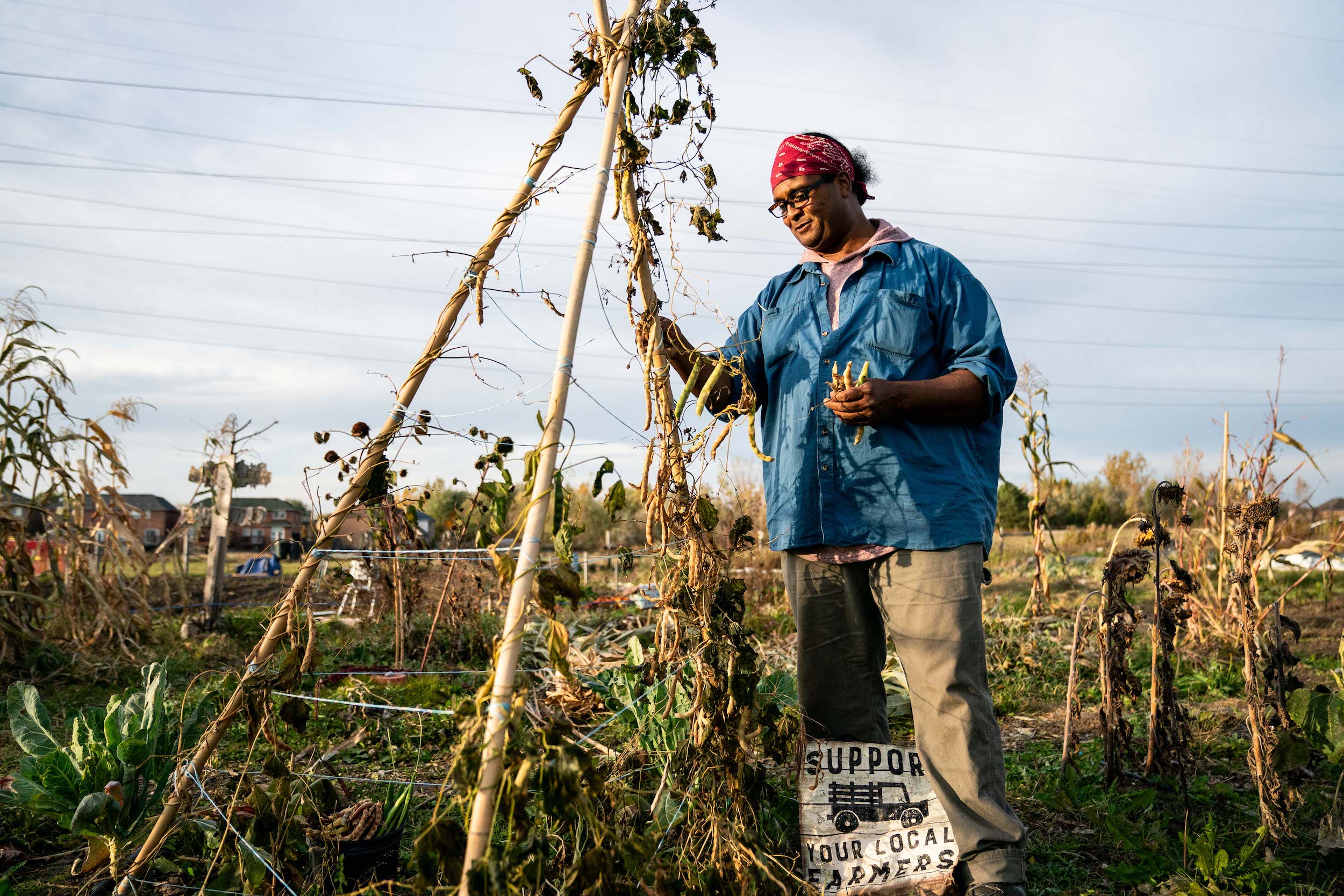
On Crosby Gitigaan, Crosby looks around to see what needs to be done to put farm beds to rest for the season. Some of his harvest needs to be cut down and laid on the ground, while crops like kale, brussel sprouts and swiss chard will be kept in the ground for another week: they taste better after the first frost, when crops “die down” and cold weather turns their starches to sugar. Some of those crops are also left behind as food for rabbits, since animal droppings are free manure.
Crosby doesn’t see himself as simply a farmer. “I’m an earth helper. That’s how I introduce myself,” he says. “We have worked this earth for so long, especially in North America for the past 400 or 500 years, that I can no longer call myself an earth worker. I now have to be an earth helper to help her get back to the way she was, so that future generations are able to take care of her and have the benefits I had growing up.”
For Crosby, this means teaching people how to garden better and care for the earth. He is a walking encyclopedia of Ojibwe agricultural methods such as clay pot irrigation and making natural insecticides from tomato leaves, both of which he is using on his farm.
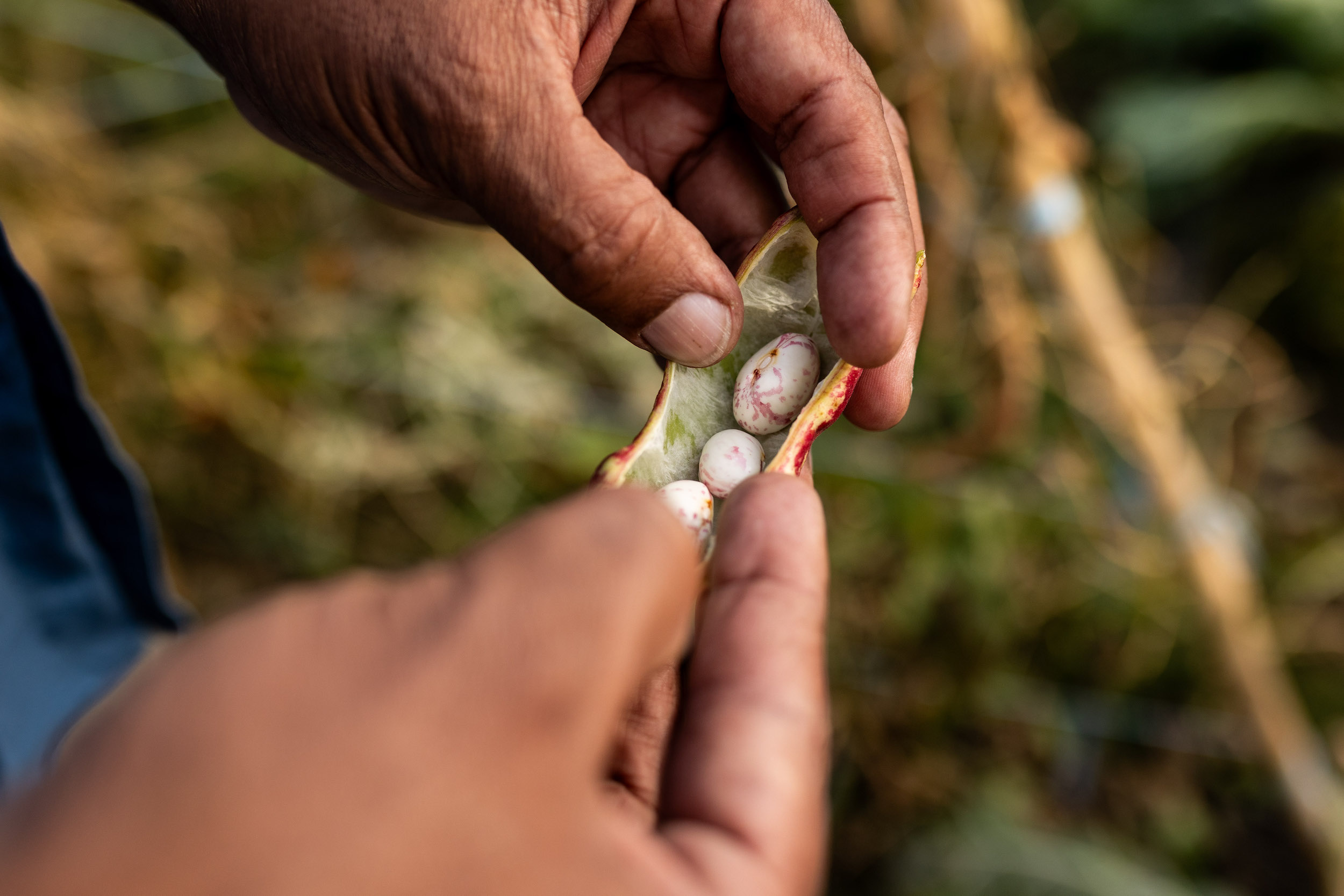
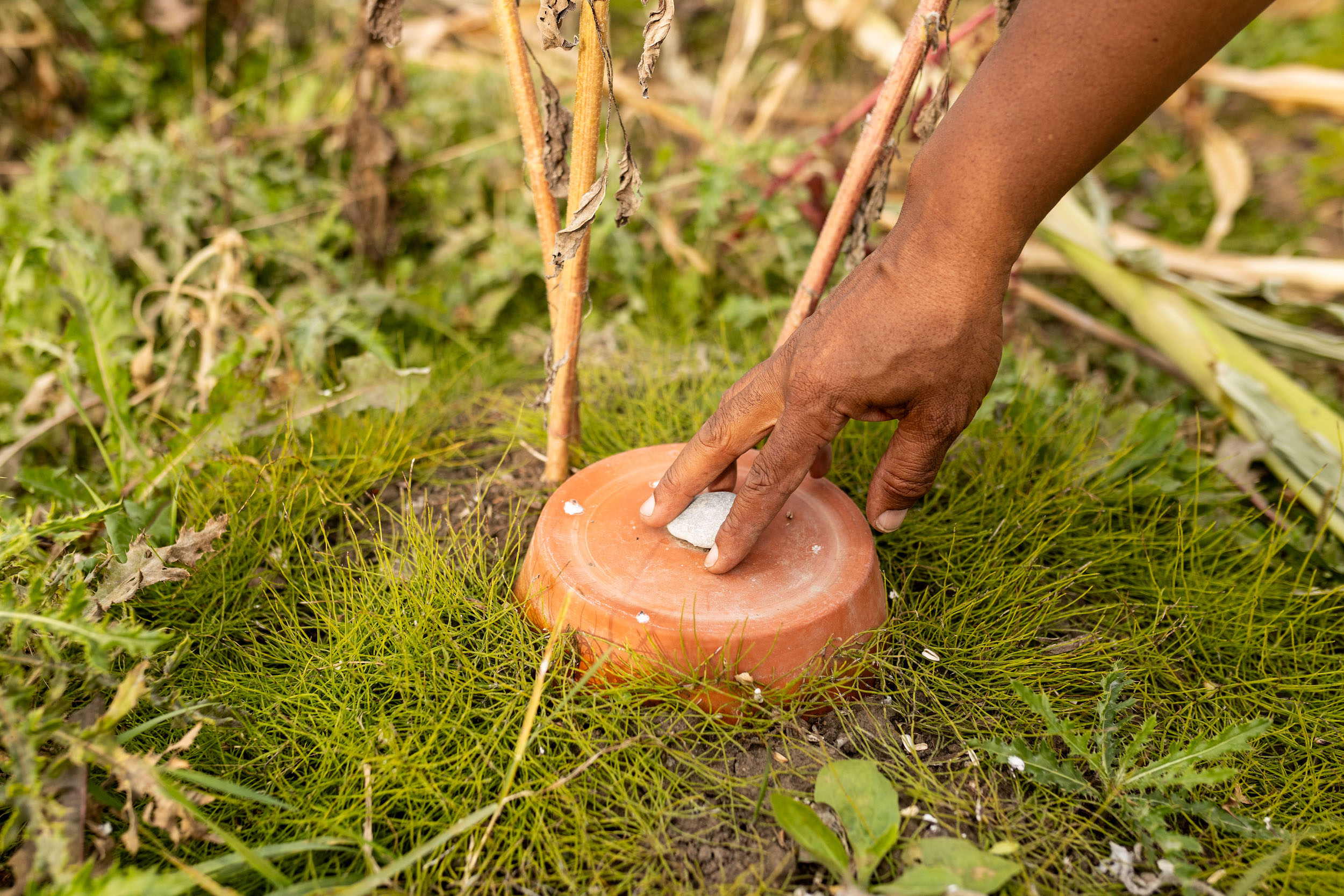
Crosby’s community is the Ojibwe of Anderdon, also known as the Chippewa of Malden, and his traditional territory is the very southwest edge of Ontario, where Lake Erie flows into the Detroit River. Growing up in Harrow, about half an hour south of Windsor, Ont., Crosby’s love for earth-helping started from a young age. His mother and father are both farmers, part of a large Black Indigenous farming community in Harrow that practises age-old Indigenous agricultural techniques and farming methods.
It’s important to him to share his Afro-Indigenous heritage and his family’s connection to this land. “We’re the people that brought in the enslaved people back in the late 1700s, early 1800s — mixed, married and mingled to produce people who look like me, and we are still here to this day,” he says. He believes his role as a keeper of Indigenous plant knowledge is especially important because that knowledge was endangered by colonialism. “A lot of First Nation people grew up on reserves. We did not. We were kicked off our land, but we still had our farm that we were taking care of.”
Canada’s dark colonial history and its destructive impact on Indigenous Peoples played a role in the erasure of traditional agricultural practices. Canadian laws in the 20th century made it difficult for many First Nations people to use traditional means of sourcing food, including farming: among these barriers was the 1876 Indian Act, which prohibited First Nations homesteading, and put limits on what agricultural products Indigenous people could sell.
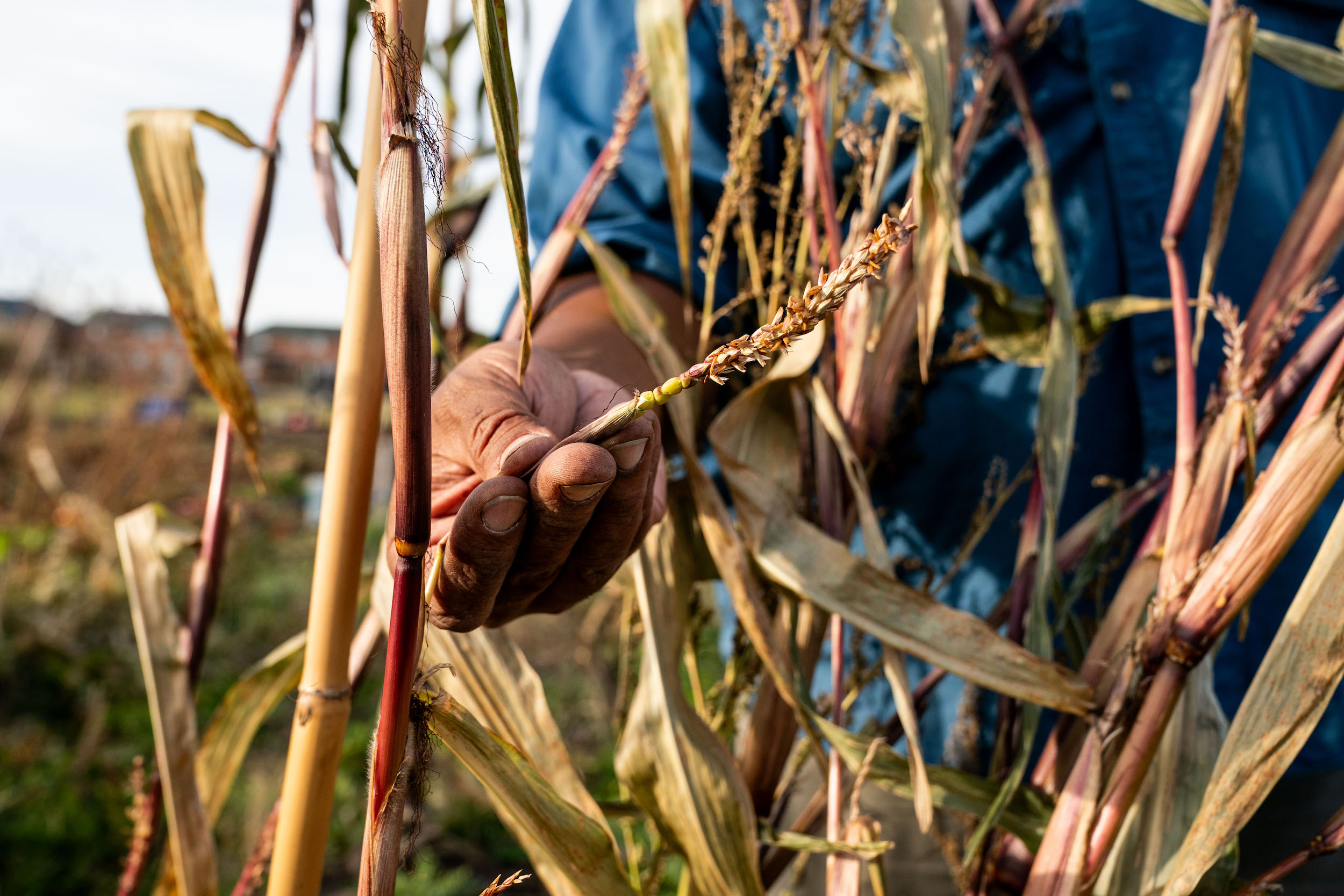
For the farm’s second planting season next year, Crosby plans to transition more of his farm beds from westernized monoculture farming to Indigenous mound farming. “Western farming, European farming, everything is put into rows. Indigenous farming, not so much; you’re basically mimicking nature. If you look at nature, nature does not plant anything in rows at all. If she’s casting seeds, she’ll probably close her eyes and just throw it; whatever grows, grows. That’s how nature does it, and that’s how we do it.”
On Crosby Gitigaan, Crosby works alongside his sister and nephew to take care of the land while sharing knowledge with the wider community about Indigenous farming and foods.
So far, the focus has simply been on understanding the land and figuring out what to grow, as the non-profit farm gave away produce to its volunteers.
Next season, Crosby plans to have a stall at Malvern Family Resource Centre’s farmers market, which includes workshops on how to succeed in a market garden system, a chance for small-scale farmers to make an income from their crops. Market garden systems don’t always reflect the historic diets of Indigenous communities, Crosby explains. He hopes his stall will showcase foods, fruits and veggies Indigenous to the Americas that most people don’t know about.
Traditional foods like white corn are not sold at grocery stores, Crosby says, one reason farms like Crosby Gitigaan are essential to cultivating Indigenous food sovereignty in Toronto. Here, there are rare crops and varieties of Indigenous plants, such as Wyandotte beans and teosinte, a wild grass from Mexico that is the earliest form of corn. Crosby grows about a dozen varieties of beans alone, many from seeds gifted to him by others.

Equitable access to land, financial resources and volunteers are critical to the success of these farms. Toronto’s 2012 urban agriculture action plan made linking growers to land and space such as hydro corridors a key priority, but it took almost a decade of planning and working through red tape before the pilot programs in the Finch and Gatineau corridors were launched in 2021.
Reclaiming hydro fields to create gitigaanan puts food and nutrition back into the hands of everyone who lives in underserved neighbourhoods like Malvern, while also strengthening food sovereignty for urban Indigenous people. “Without Indigenous food sovereignty, we won’t be able to grow our own traditional foods. We will not have access to our own foods that are great for us,” Crosby says.
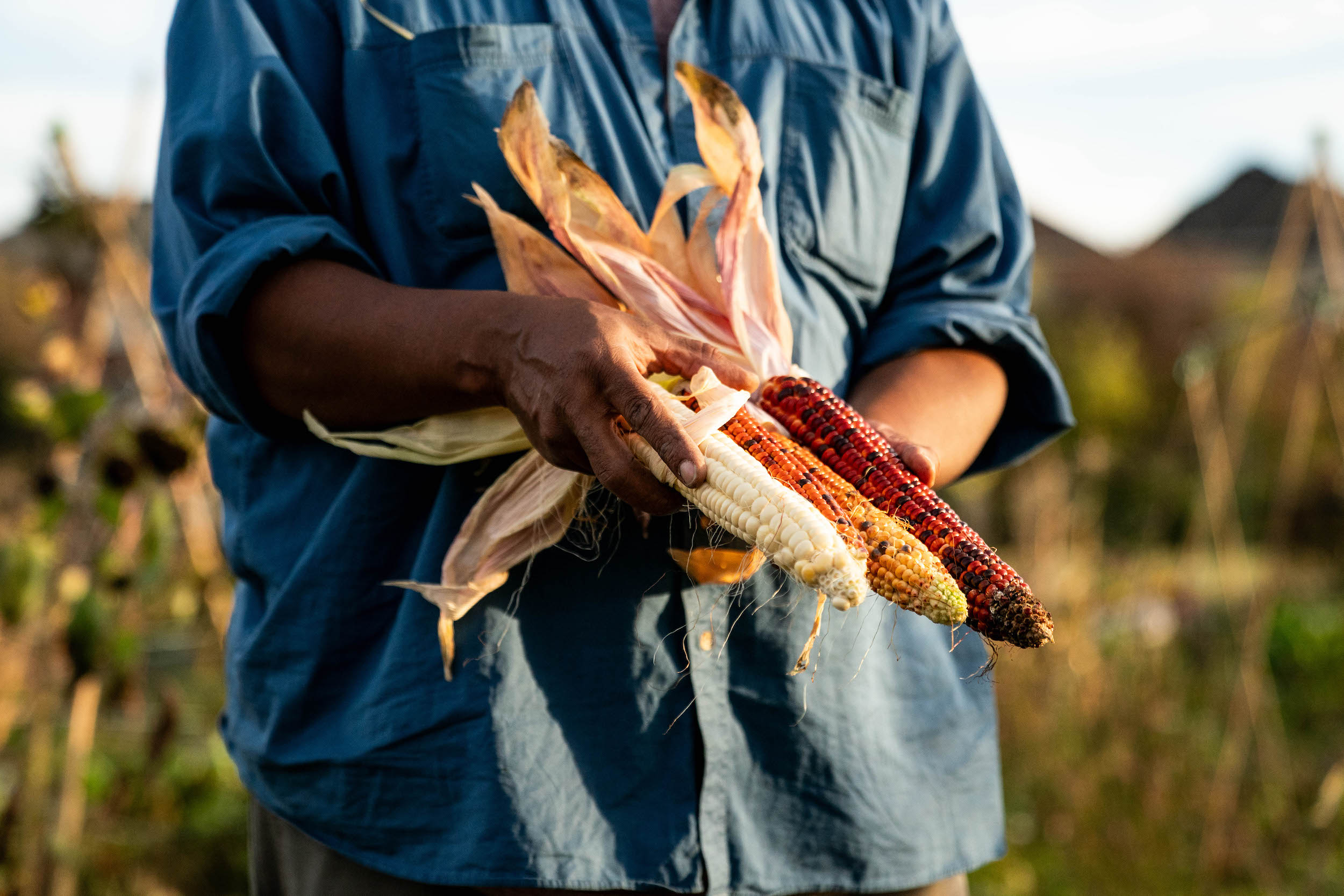
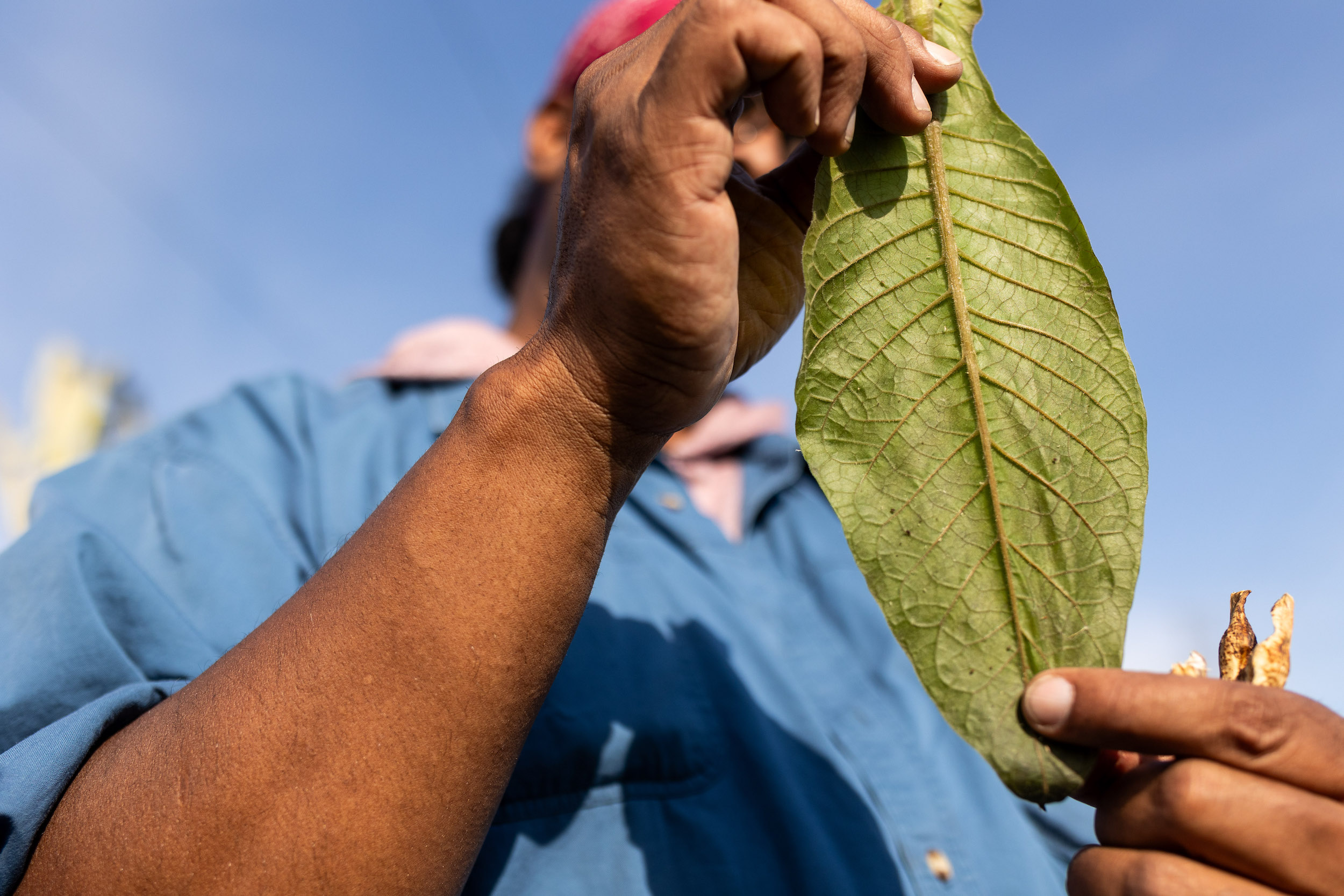
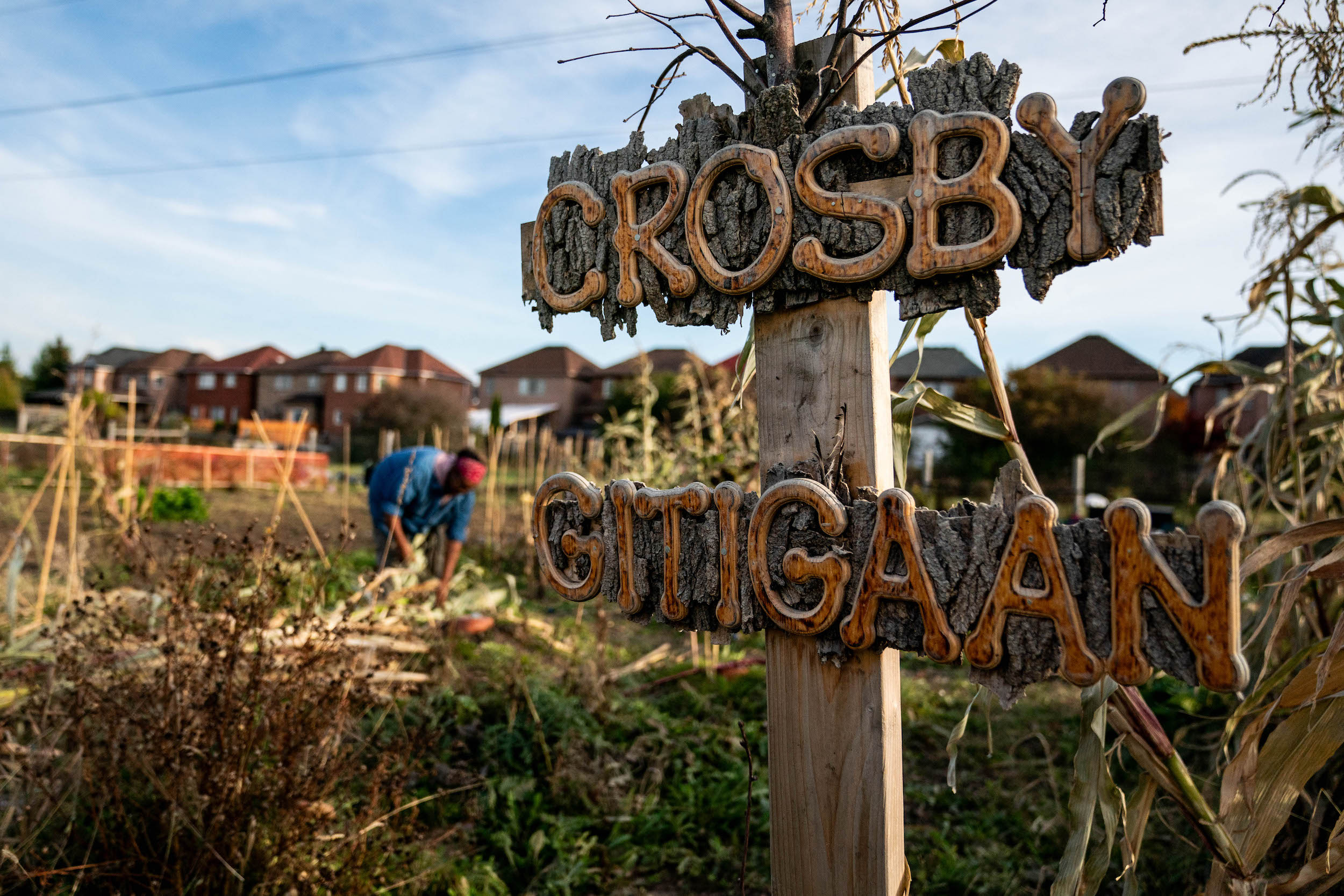

Like Malvern Urban Farm, Flemo Farm is located directly under hydro wires, but here, it’s next to basketball courts, cricket fields and parks where people gather. Just 15 minutes from downtown, the farm hums with the sounds of heavy traffic from the nearby Don Valley Parkway.
The half-acre (0.2-hectare) farm is a collaboration between FoodShare Toronto, Flemingdon Health Centre and the City of Toronto. Flemo Farm broke ground in 2020 under the same community engagement and entrepreneurial development garden pilot as Malvern Urban Farm, with the goal of transforming a portion of the nearby hydro corridor into a vibrant community space for local food production.
Anishinaabe chef and entrepreneur Charles Catchpole grew up near Ottawa in the town of Smith Falls. Despite not living in Flemingdon Park, Catchpole has contributed a great deal as the Indigenous farmer at Flemo Farm, where he operates Gitigaanes, a 2,400-square-foot plot.
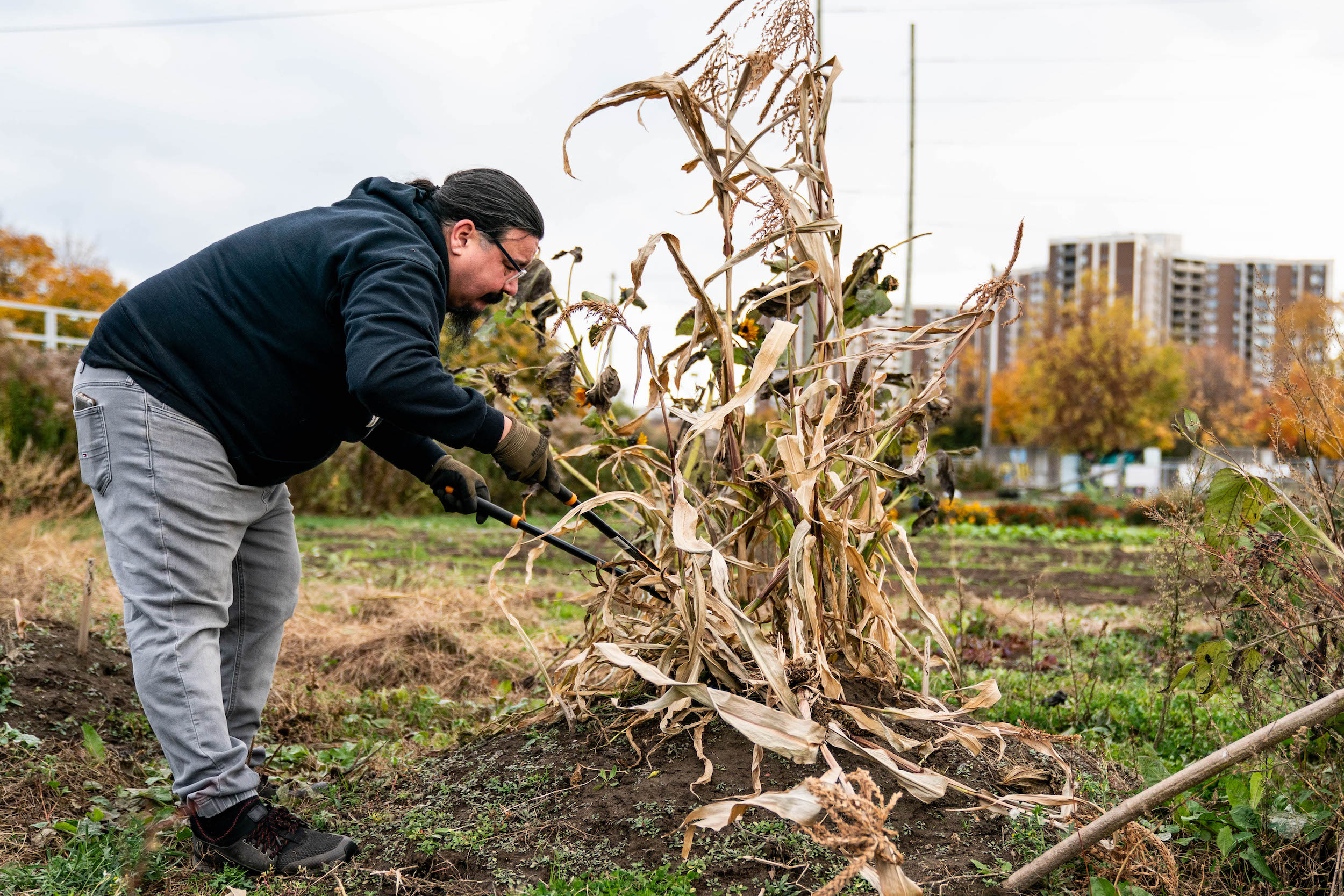
Although he is a member of Couchiching First Nation in Treaty 3 territory in northern Ontario, Catchpole says he didn’t have much of an Indigenous upbringing. It wasn’t until he met his wife, Germain Catchpole, that he started reconnecting to their shared culture and history, learning about the hardships of Indigenous communities in Canada.
Having a father who was a chef that loved experimenting in the kitchen cultivated Catchpole’s interest in cooking. But when he got to culinary school, he realized Indigenous foods and cuisine weren’t being discussed. Catchpole got into the catering business after making a name for himself cooking for Indigenous organizations.
Farming is a new venture for Catchpole, which presented itself as COVID-19 brought his catering business to a complete halt. One night after dinner, his wife stumbled upon a post from Flemo Farm seeking an Indigenous farmer and encouraged Catchpole to apply. Germain reasoned he was already teaching others about Indigenous food sovereignty and cooking in traditional ways using local ingredients. It made a lot of sense to put seeds in the ground and grow the food.
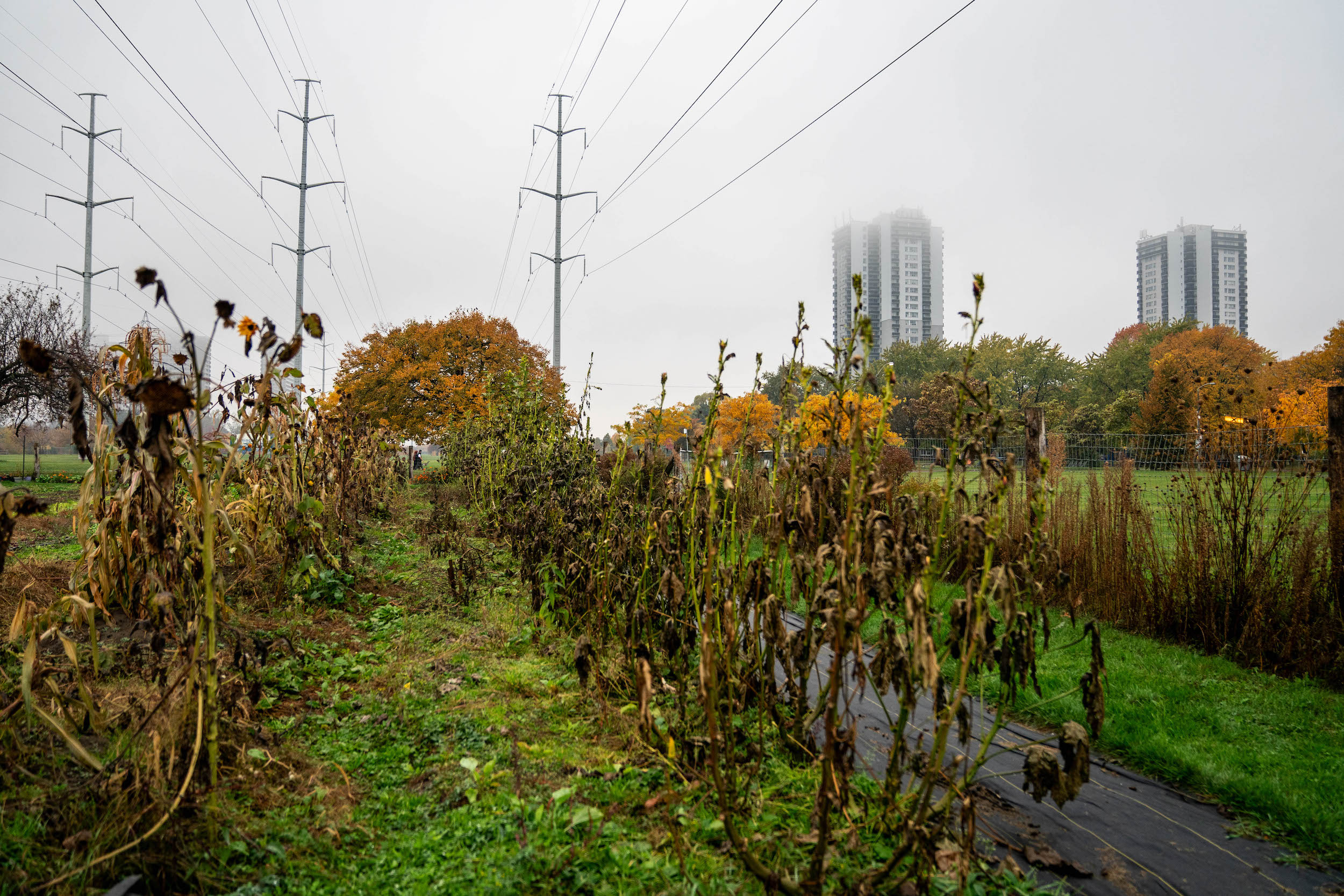
Taking on such a challenge was daunting. Catchpole found the learning support he needed from Carl Leslie, FoodShare’s previous coordinator at Flemo Farm. “That first year I was learning stuff every single day,” Catchpole says. “I think I annoyed Carl with the amount of questions that I asked, but he was patient with me and that first year was just life-changing.” He eventually became an assistant, taking some time away from catering to support the farm. Being involved as a chef expanded on the idea of farm to table, he says, the next step being “farmer to table.”
Having a farm embedded within an immigrant community like Flemingdon Park — where nearly 70 per cent of people have a mother tongue other than English — is uncommon in Toronto. During Catchpole’s first few months, he says, people approached him almost daily with genuine curiosity, asking what he was doing. By the end of the first season, he was part of the tight-knit Flemo Farm community.
Catchpole says the farm is a chance to put Indigenous teachings he only knew in theory into real world practice. Growing food oneself is just part of what’s important here, he says, also stressing the importance of getting back to a traditional diet, which for Indigenous communities meant eating the plants and animals that thrived around them.




It’s a way of life largely lost to people in inner cities, where low-income communities usually have little or no access to farm fresh food. In 2022, Public Health Ontario reported that one in four Torontonians lived in a food insecure household, with the risk being much higher for low-income neighbourhoods. Moving away from food banks as the main solution to address hunger, Indigenous farms like Gitigaanes provide a much needed long-term solution: local production of fresh foods.
“There’s a reason why people say farm fresh food tastes better, because it’s grown for taste. It’s grown by somebody that cares about growing a nutritious product for you to consume,” Catchpole says. “Where mass stuff that’s grown that you get in your major grocery stores has been grown for uniformity, looks and longevity of shelf life.”
Catchpole has also incorporated the Indigenous mound farming method for the Three Sisters: corn, beans and squash, companion plants that benefit from growing next to each other. Like Crosby, he sources rare heirloom seeds from his colleagues working in Indigenous food sovereignty, so that Gitigaanes can grow different varieties of produce, each telling its own story.
Sister corn is the first to be planted. As it draws heavily on nutrients in the soil, particularly nitrogen, it benefits from the later planting of sister beans, which creates the nitrogen corn needs. In exchange, corn provides stalks for beans to climb up and grow strong. Sister squash, which grows on the ground and deters animals with its vines, is the protector. Large squash leaves cover the soil, reducing light for weeds and slowing evaporation after rain. Together, these three sisters grow in harmony, nourishing and protecting one another.
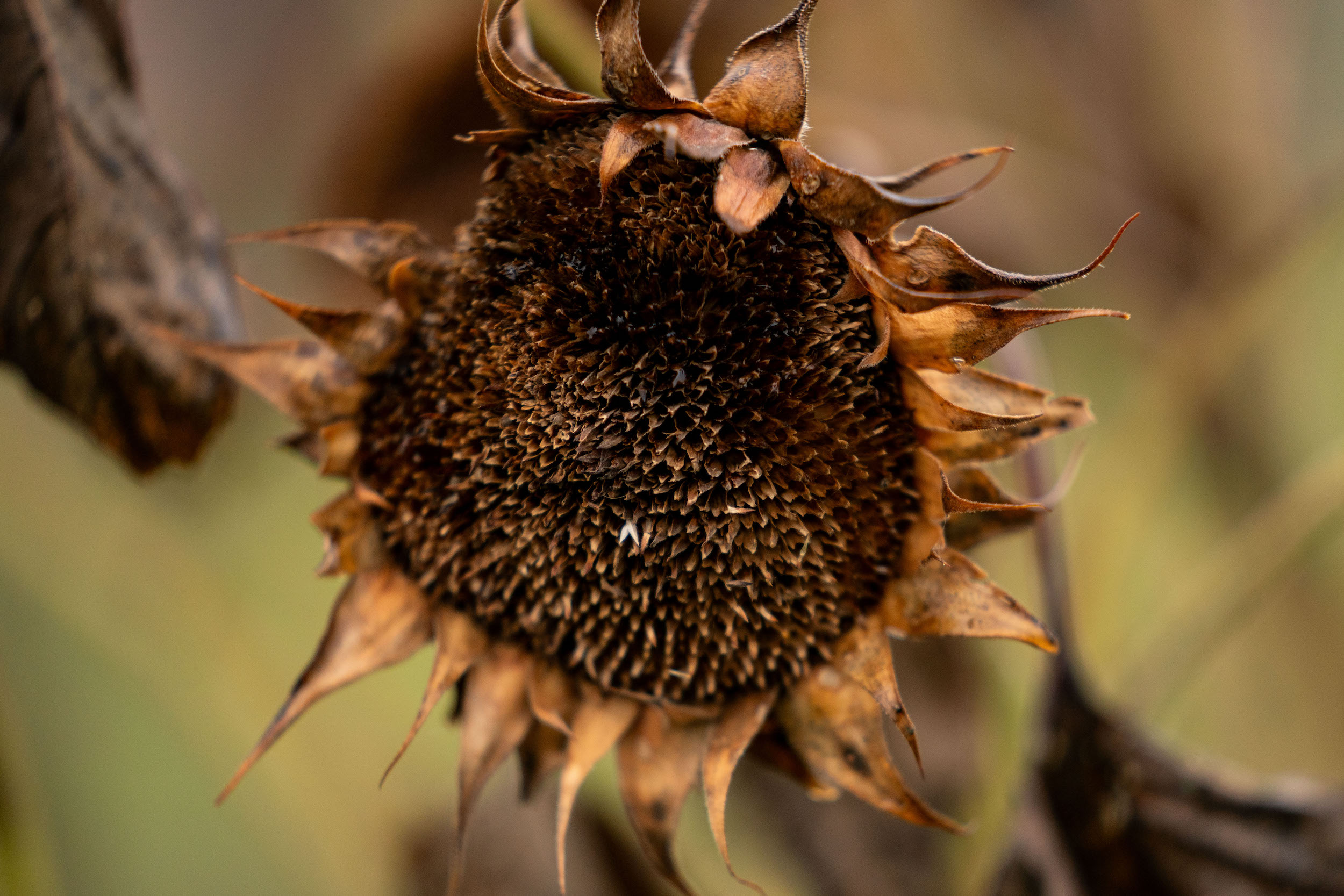
On the corner of each mound, Catchpole grows sunflowers. They’re a sacrificial plant as they grow quicker than corn. Birds eat sunflower seeds first, allowing the corn time to grow and be harvested without falling prey to hungry animals. Gitigaanes also grows the four sacred medicine plants — tobacco, sage, cedar and sweetgrass — along with different herbs Catchpole uses for his catering.
To assess the pilot project’s progress over the last two years, the city will consider how Flemo Farm is contributing towards community engagement and economic development opportunities. Success would mean more hydro corridor space becoming urban farmland — more plots and more community farmers in Flemingdon Park and beyond.
Catchpole sees endless possibilities. “So if we can do it in one spot, why can’t it be done in many spots across all these cities? People can get back into learning how to farm, learning how to grow for yourself.”
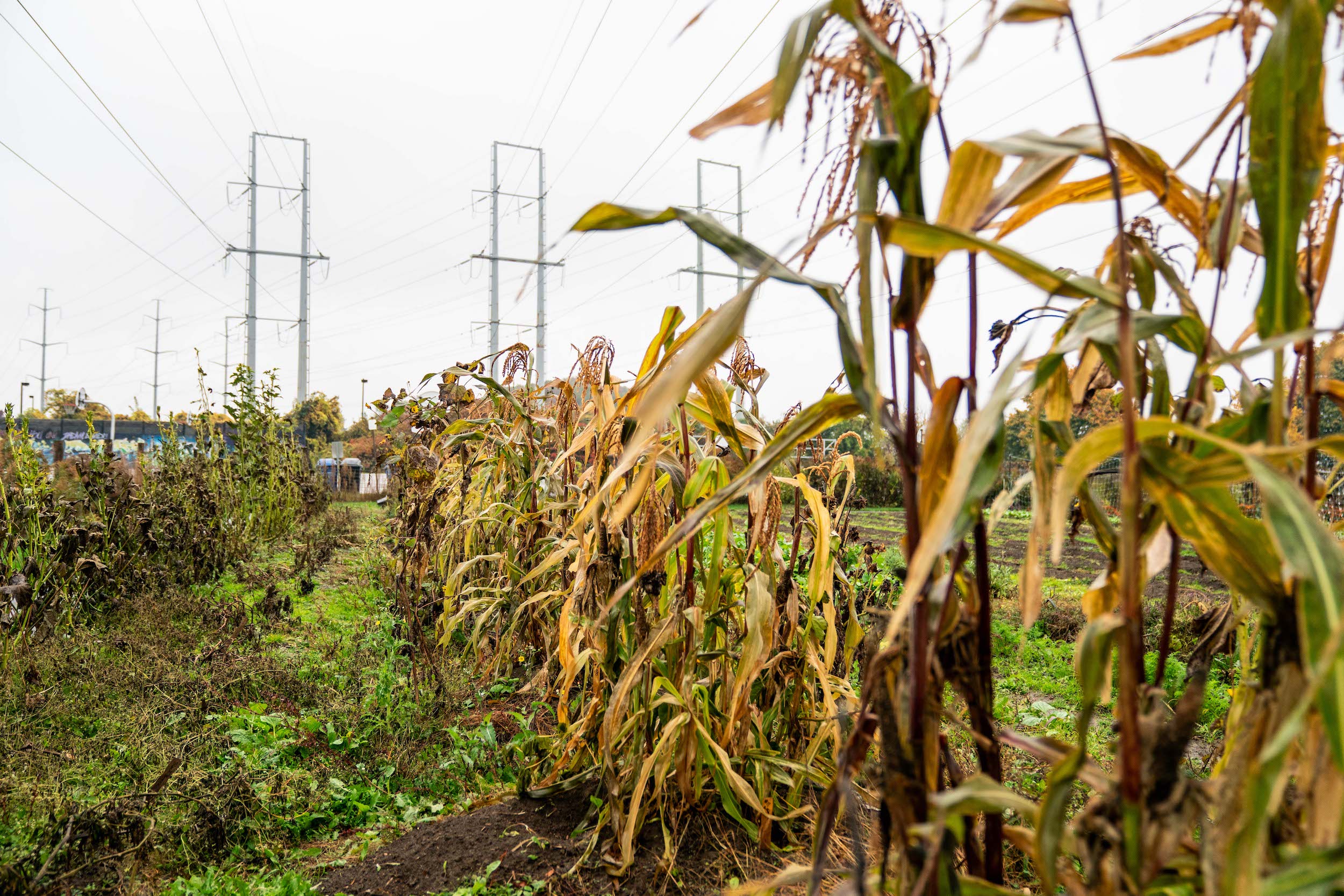
Updated Jan. 5, 2024, at 2:43 p.m. ET: This story was updated to note that Harrow, Ont., is about half an hour south of Windsor, not an hour and a half.
Get the inside scoop on The Narwhal’s environment and climate reporting by signing up for our free newsletter. On March 17, federal Conservative Leader Pierre Poilievre...
Continue reading
Artist Alison McCreesh’s latest book documents her travels around the Arctic during her 20s. In...

I’ve watched The Narwhal doggedly report on all the issues that feel even more acutely...

Establishing the Robinson Treaties, covering land around Lake Huron and Lake Superior, created a mess...
